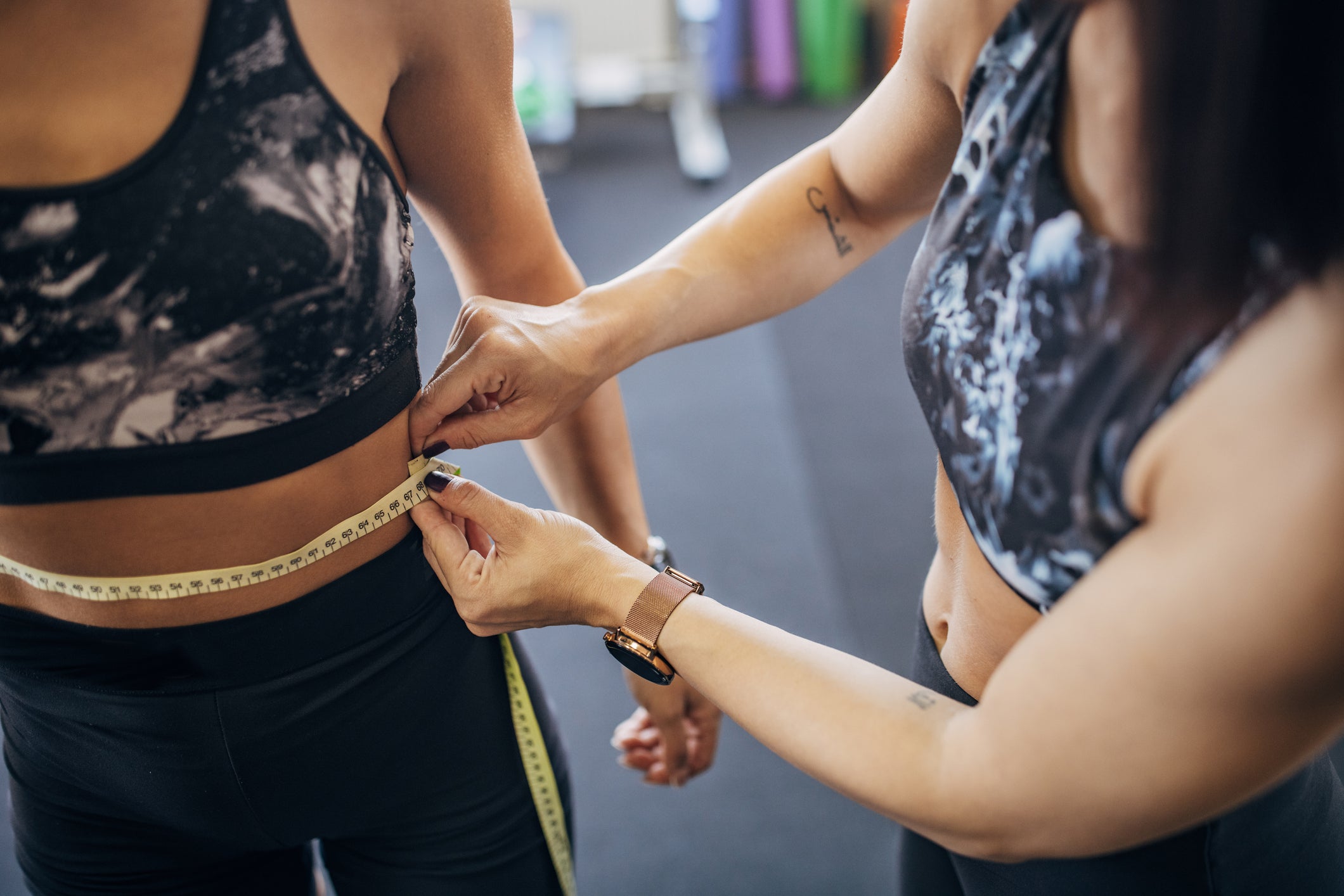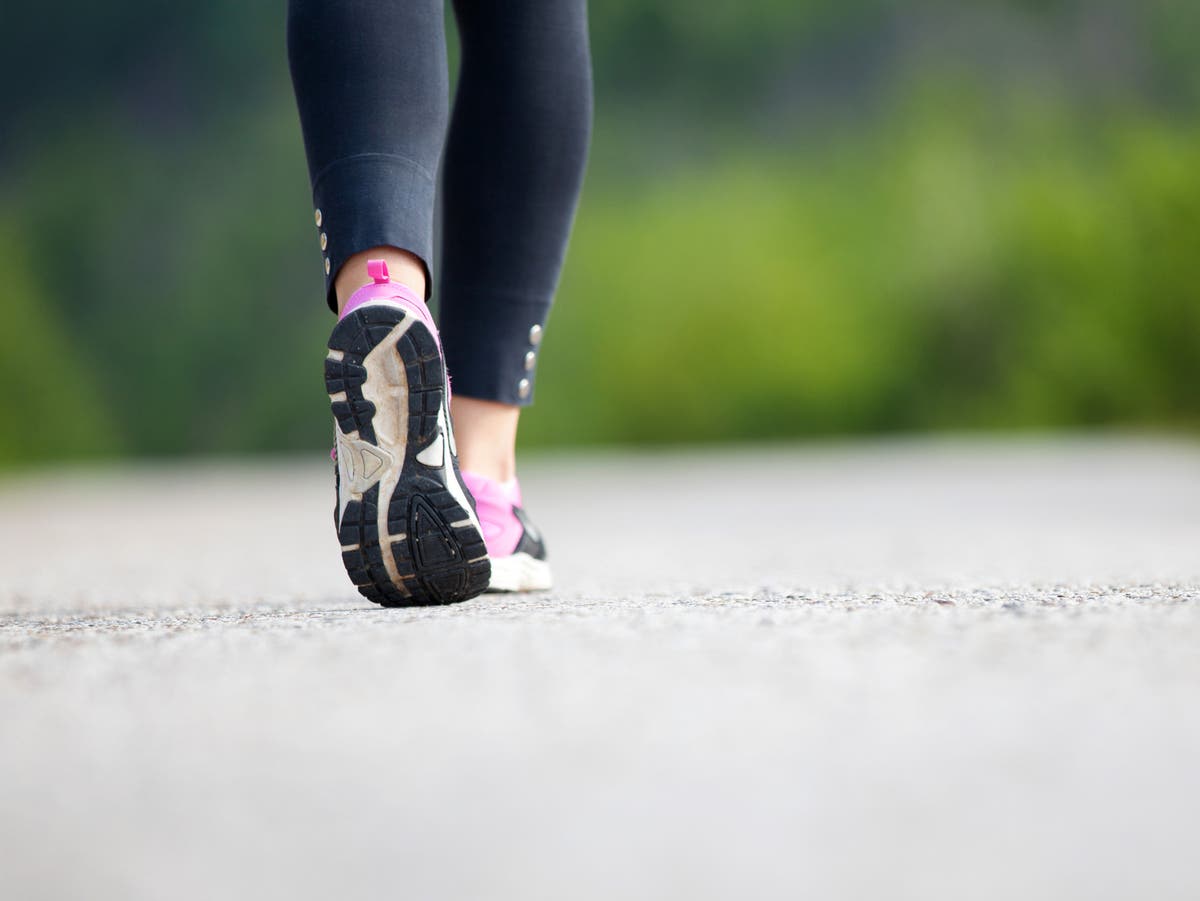Gut health reset: seven simple exercise and lifestyle hacks to banish belly fat

If you have come back from holiday carrying a few extra pounds and have made a promise to yourself to exercise more and improve your fitness, we have some good news for you. Leading trainer Matt Roberts, is that it’s not all about doing hundreds of sit-ups – in fact, to take inches off your belly, you don’t have to do any sit-ups at all.
“Reducing your waist size through exercise is about taking steps to reduce fat and build muscle, which will improve your body composition over the long term,” says Roberts, who has trained the likes of David Cameron, Naomi Campbell and Amanda Holden.
In 2019, he founded Evolution, two London gyms where he collaborates with physiotherapists, dietitians and other experts to deliver a whole body service combining evidence-informed practice and innovation.
“When clients want waist reduction, we will do regular Dexa scans on their bodies to measure visceral fat throughout their programmes so we know what we are doing is working to reduce it.” Here are some of the key things that work to reduce waist size for Roberts’ clients.
Do Zone 2 training four times a week for 40 minutes
Where the last decade has been all about high-intensity interval training or HIIT, where you alternate periods of high and low intensity, Zone 2 training is about long periods spent doing cardio at a medium intensity. It’s where more and more trainers are pointing if fat burn is the goal.
“To reveal your waistline you need to burn the fat on it and one of the best ways to do that is 40 minutes of Zone 2 training four times weekly,” Roberts advises.
This could be a brisk walk, rowing, bicycling, hiking, the cross trainer or a dance or spin class – anything that gets you moving and breathing harder. But not too hard. “Zone 2 training is done at 60-65 per cent of your maximum heart rate.” You can calculate that for yourself here. If you wear an activity monitor, Zone 2 is usually the green fat-burning zone (Zone 3 is orange and 4 and above are red).
“It can get a bit boring to sit on the bike/walk or whatever at the one speed and not deviate but I just watch a TV show on my phone,” says Roberts. “It’s really something everyone should be doing for fat burn, regardless of their fitness levels.”
What else is going on though? “This training gets your mitochondria functioning better so your body becomes more of a fat-burning furnace as you go about your life, not just in the gym,” says Roberts. Your mitochondria are the energy-producing powerhouses in all your cells, and Zone 2 training increases their efficiency so you burn more fat even at rest. “Zone 2 helps adapt to burning fat for energy instead of glycogen (sugar), which is the body’s first response,” Roberts explains. “By going for 40 minutes or more, you’re moving into the fat-burning range.”
Build the big-burn muscles
Visceral fat around your middle is hard to shift, so you need to press all the buttons you can to increase your body’s day-to-day fat burn capacity and as a result, your metabolism. “To build your body’s fat-burn efficiency you need to build up the large muscle groups as these are the ones that demand the most calorie burn,” says Roberts.
Your basal metabolic rate (BMR) is the energy your body needs to maintain basic physiological processes such as breathing, circulation and cell maintenance, even when you’re at rest. Your BMR is the number of calories your body needs to perform these processes. “Strong bodies need more energy, so your aim is to build some strength,” says Roberts. Muscle tissue is metabolically active, which means it burns more calories than fat while you’re at rest, thus increasing your BMR. It’s the key reason trainers insist you add strength training to any programme of weight management.
For two to four days a week, do 30-60 minutes of strength training, Roberts suggests. Focus on exercises that build the biggest muscles in your body – the quadriceps, hamstrings, glutes, chest and back – for maximum at-rest burn. “To use the major muscle groups in your workout, make sure you include squats, deadlifts and lunges for the lower body muscle groups and bench press, rows and pull-down work for the upper body,” Roberts suggests. “Lifting the heaviest you can is ideal for muscle building [and women don’t worry, it’s incredibly difficult to get ‘big’] at a weight where you can only complete five reps.’ If that’s not your thing, you can also use bands or your own body weight to build muscle too.
“Remember too, that any strength exercise you do will be engaging your core, from squats to bench presses, so make sure you’re really tensing and holding in your abdominal muscles to get maximum effect,” says Roberts.

Now sculpt
For waist size changes you need fat-burning. Then, once the waist starts to reveal itself, you can start sculpting to create more strength in the mid area with exercises like planks, side planks with arm reaches and leg raises and core mobility work. These give you some waistline tensing and firming and an increase of muscle in the mid-torso area, says Roberts.
“Rotational work with cables or bands is also really helpful for sculpting the waist – try woodchoppers with a ball or cables, which really engage and overload the abdominals and the oblique muscles at the side of the torso as well as the lower back – so it works the whole core which extends right around your middle.”
Ditch the sit-ups
“It’s pretty rare that we use sit-ups for any programme,” says Roberts. “Regular conventional sit-ups can have an effect but at the same time you’re really overloading your hip flexors, which can cause a lot of people a lot of other pain instead of feeling the pain they should be in their abdominals.”
Here’s why that’s a problem. Your hip flexors are the muscles at the front of your hip joints and if you sit for a living, the chances are you will have shortened, tight hip flexors and reduced flexibility in them. Sit-ups can put pressure on these muscles and that can lead to back pain and other mobility problems.
Three lifestyle changes that could help your waist
From the scientists at King’s College, here are three ways you could impact your waist size in addition to diet and exercise changes.

Keep a regular sleep schedule
Is there anything sleep can’t do – from memory to focus to skin benefits – not getting enough sleep can impact your waist too. A meta-analysis of the research in this area published in the journal Sleep found that people who habitually had shorter durations of sleep (sleep for less hours on average) had wider waists than those who got their seven to nine hours.
Plus, when it comes to your gut microbiome which can directly affect your waist size, social jet lag seems to have a negative effect, according to research from the Zoe Predict study published in August 2023. Social jet lag is the feeling of tiredness and sleeplessness we get from inconsistent sleep patterns, especially at weekends.
So, the advice from the King’s College scientists is to try to go to bed and wake up at the same time every day, give or take an hour on weekends.
Get your downtime
Long term, chronic stress is associated with wider waistlines, according to 2017 research from University College London. Scientists analysed hair samples of 2,527 men and women aged 54 and older over four years measuring their levels of the stress hormone cortisol. They found those who had higher levels of cortisol present in their hair tended to have larger waist circumference measurements too.
“Another lifestyle factor which has a huge impact on where we store fat is our cortisol level which is our stress hormone,” says Dr Sarah Berry. “Having high stress levels throughout our day increases the risk of having more of the unhelpful belly fat around our organs. Making sure you move every day not only helps to bring down our stress levels, but it also helps our metabolism use some of the stored fat as energy.”
None of this works in isolation – the Zone 2 training mentioned above is great for working off stress hormones like cortisol and adrenaline and will also impact your sleep in a positive way.

Cut down on alcohol
Ah, the elephant in the room. We all know a fat-bellied big drinker or two, but does alcohol cause thicker waists or doesn’t it?
“Although the ‘beer belly’ is a household name, there’s nothing specific about beer that causes an increase to your waistline,” says Dr Federica Amati, head nutritionist at Zoe, nutrition topic lead at Imperial College London and author of Every Body Should Know This: The Science of Eating for a Lifetime of Health (Michael Joseph, April 2024 £20.24). “The main issue is that beer (and alcohol in general) is high in calories and often freely available sugars as well.
“A pint of beer has around 200 calories, depending on its strength. And a medium glass of wine has more than 150 calories. A sweet cocktail can contain as much as 245 calories and over 20g of sugar. We know that drinking calories causes a more rapid metabolic response which leads to extra fat deposition.
“When we deposit fat, if our muscle stores are full and our fat tissue around our body like our legs and bums is also full, we store fat around our organs and middle. If you drink two pints per day, that’s an extra 2,800 calories every week. If that’s not used, it will be stored.
“Alcohol also contributes considerably to a higher risk of fatty liver and liver disease, which can cause the liver to enlarge and give the appearance of a belly. This kind of visceral fat in the liver and in the pancreas is highly associated with metabolic disease.”
So should we all give it up? “Drinking in moderation and focusing on the quality of your alcohol is key,” she says. “Red wine is a better choice due to its high content of beneficial polyphenols, and can be part of a healthy diet if consumed in moderation. These polyphenols are associated with potential health benefits and they are great for your gut microbes. Moderation really means no more than one small glass three to four times a week, and for some people not drinking at all is the best option.”
Sober (ish) September anyone?
Source: Independent














